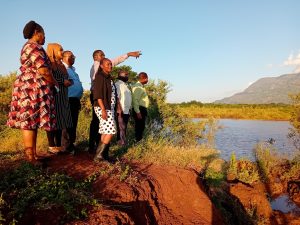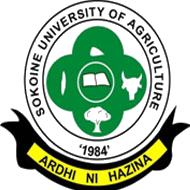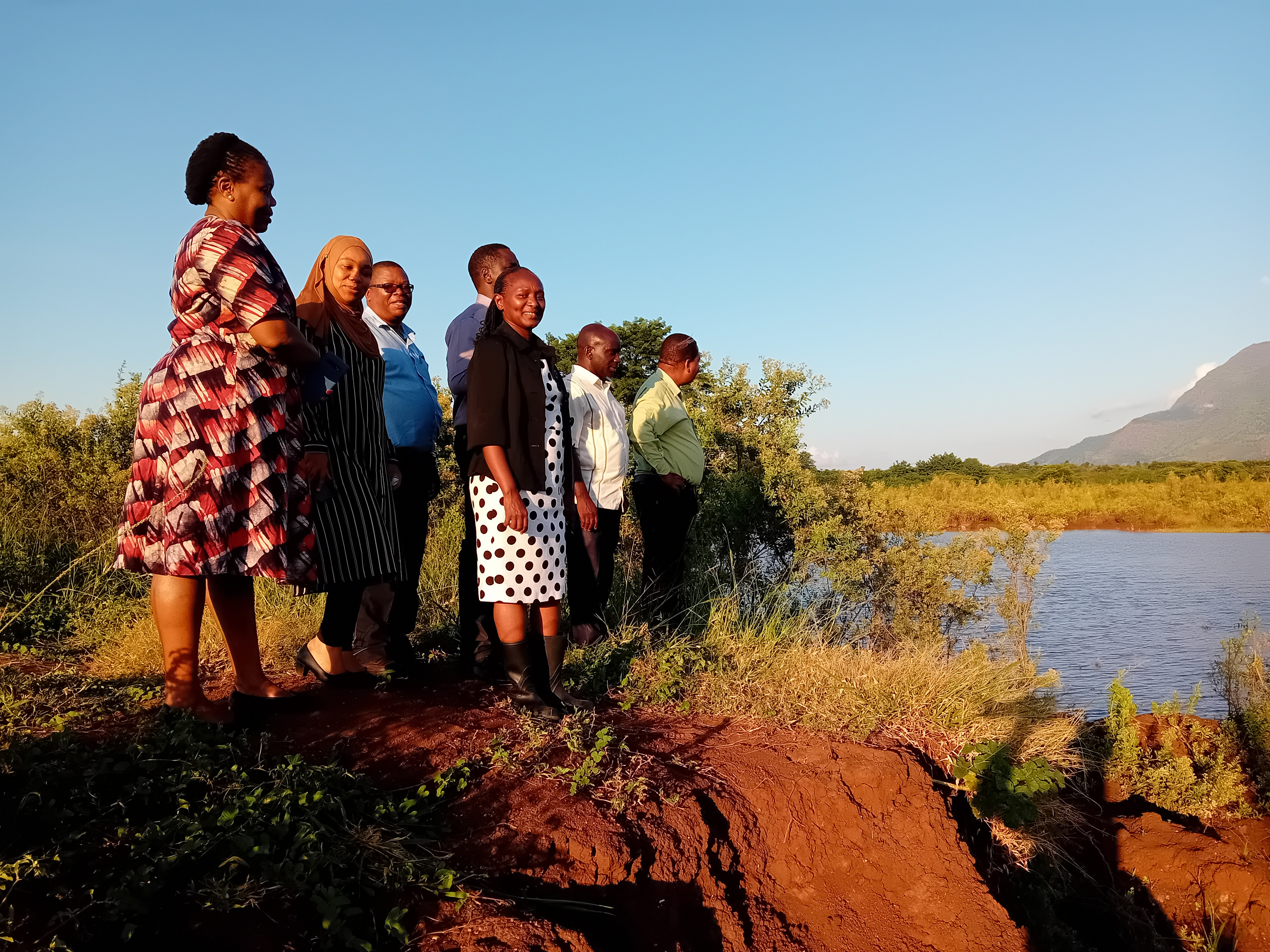The Management team of the College of Agriculture, including the Principal, Head of Departments, Human resource officer, and chairman of each Committee visited the SUA rainwater harvested dam. This dam plays a crucial role in irrigating different farm plots at the Sokoine University of Agriculture including seed production farms. The team went to the dam area to assess the damage of the dam that occurs from natural disasters and management factors intending to find out solutions, that will prevent future damage occurrences and other potential risks.
The edge of the dam was destroyed after the heavy rains and cattle trampling at one angle of the dam, which led to severe damage to the dam. The cattle access point into the dam forged by tracepassed livestock keepers weakened and eroded the dam bank as the animals walked down the bank to access water in the dam. The team went to assess the impact of the damage, the causes and seek input from technical experts, such as dam engineers, hydrologists, environmental scientists, sociologists, and took necessary precautions to mitigate risks.

The management team led by College Principal Dr. Nyambilila Amuri visited the area and immediately arranged safety measures to prevent any further risks at the dam site, offering sustainable solutions for water management and enhancing the productivity of the farm. The prioritized actions were based on the urgency of repairs, safety considerations, and available resources. Promptly reinforcing and repairing of the bank to prevent further damage and ensure the effectiveness of the structural functioning of the dam. For sustainability in water management and environmental conservation efforts, it was also proposed to implement fencing or barriers towards restrict livestock movement at the edge of the dam and surrounding environment.
Rainwater harvesting dams capture rainwater runoff, allowing the farm to conserve water resources to be used for irrigation throughout the dry season. Generally, harvested rainwater is free from salts and other impurities, making it an ideal water source for irrigation purposes. This can lead to improved crop yields and reduced input costs associated with water treatment. Also, by reducing reliance on expensive external water sources such as groundwater pumping or municipal water supplies, rainwater harvesting dams help seed production farms save on water costs. This can significantly improve the economic viability of seed production operations.
This rainwater harvesting dam helps regulate soil moisture levels by providing a steady supply of water to the root zone of crops. This minimizes the risk of moisture stress or waterlogging, which can negatively impact seed quality. Consistent and adequate water supply is essential for high-quality seed production. Rainwater harvesting dams ensure that crops receive sufficient moisture throughout their growth cycle, leading to improved seed quality, higher germination rates, better overall crop yields, and reduced input costs.

Sokoine University of Agriculture
Share this page




